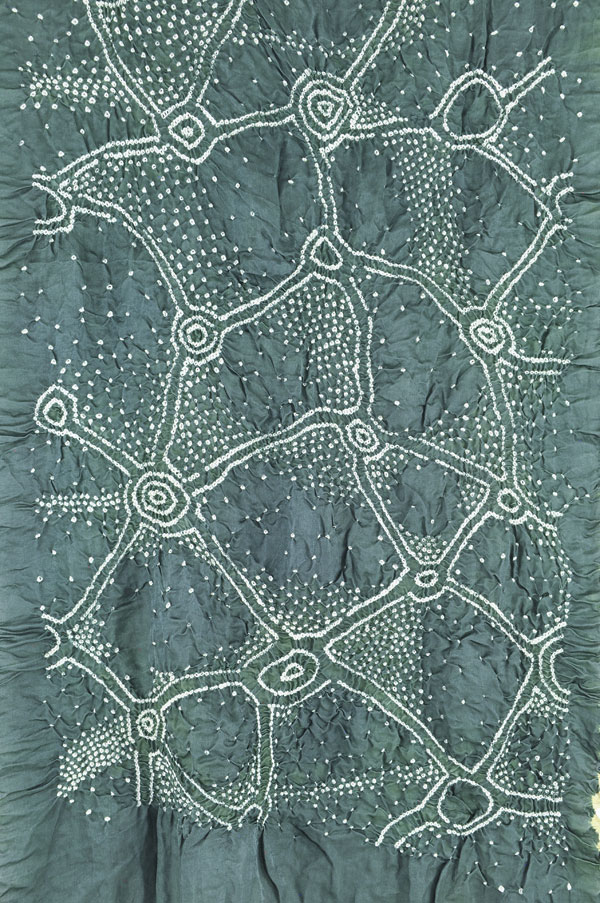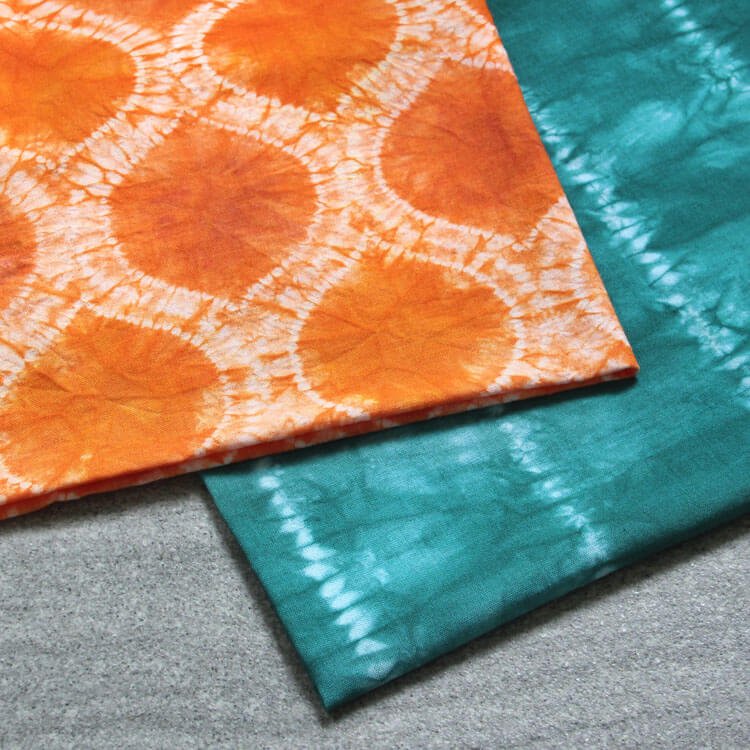tie dye resist technique
There are many more techniques that are so easy to try and get terrific results. Shibori Pole Dyeing Technique.
B Tie both the warp and weft and dye for example.
. You can fold the fabric into pleats and then tie and then dye. The process of tie-dye typically consists of folding twisting pleating or crumpling fabric or a garment before binding with string or rubber bands followed by the application of dye or dyes. Lay fabric out on the table and if using a flat drying.
This is the perfect St. This glue resist dye technique is amazing the results come out so cool. For the Shibori stitch resist technique use thread to stitch any design or pattern you can think of onto the fabric from simple lines to complex patterns.
Hot Water Irrigation Technique tie-dye method. Dye the fabric These dyeing instructions are for Rit dye but other types of dyes can also be used for this. Tie-dye is an adventure every time with a multitude of effects that make this craft incredibly versatile.
The fabrics are tied through threads or rubber bands. Tie and dye is an ancient resist dyeing technique. AEither warp is tied and dyed or the weft is tied and dyed for example single lkat Mashru.
Jun 03 2020 Shibori tie dye is a unique way of sprucing up any plain fabric. The manipulations of the fabric before the application of dye are. Cultures around the world have developed an array of resist dye techniques.
Let set 4-6 hours. Let it set flat or even better hung on a hanger for six hours. Its fast inexpensive and there are no limits to what you can write or draw on fabric.
A WORLD OF RESIST DYE TECHNIQUES April 6 2012 - June 9 2013. Sprinkle on salt Sprinkle on Salt Resist. Tie and dye as you usually do.
Lightly spray over scarf. Spray scarf Spray draped scarf with full strength dye. Resist-dyed textiles Resist-dyeing is a widely used method of applying colours or patterns to fabric.
Double lkat Patola Telia Rumal. A 3 minute and 59 second video featuring Kris from iLoveToCreate demonstrating a tie dying tutorial on how to use Tulip Tie Dye Resist for your next tie dye. March 1 2016 Using Elmers Blue Gel glue as a dye resist is a favorite dyeing technique.
Tie and dye is a self explanatory term you just tie and then dye fabric. Tie-dye is a technique that has become familiar to many Americans because of brightly colored. The areas that are tied.
Rinse remove thread. This is a very basic tie and dye technique for creating uneven textured patterns on fabric. Stitch the fabric For best results use a fabric made from natural fibers like cotton and pre-wash the fabric.
Then you dip the fabric in dye. Nov 01 2020 Working Time. The process of tie and dye typically consists of folding twisting crumpling or pleating a fabric and then dying it that produces different textures through dyes.
Tie-Dye 101 teaches you all the basic tie-dye techniques so you can create just the design you want. The use of. Shibori Tie-Dye with Stitch Resist Fabric Dyeing Technique.
How does it work. Httpbitly19AxXcwUse clear Gel Tacky Glue for a fun. Let it dry and then apply your dye as usual according to the package directions.
Cover your table with a a cut open Hefty Ultra Strong Drawstring Trash Bag and top with layers of paper towels. Spray dye Mix Tulip One-Step Fashion Dye and apply spray nozzle to bottle. Spray over protected area.
Take a dry prewashed shirt and draw designs using white glue gel. First up use glue gel as a simple resist to create color infused fabric that textile artists of all ages and abilities are sure to enjoy creating. Try out new and different tie dye techniques for fun and creative looks to your summer accessories.
Answered Dec 07 2016 True because tie dye is when you add a pattern to something John Smith Answered Oct 05 2016 True Wax is used to resist the dye stop it. It is a resist dyeing method in which the areas you do not want dyed are blocked using different methods of tying and then the fabric is dyed. A substance that is impervious to the dye blocks its access to certain areas of the fabric while other parts are free to take up the dye colour.
Large salt crystals can have the same interesting effects on a finely woven cotton or rayon that they have on silk but it will not work unless you use the right sort of dye or paint and enough tension. Wear gloves or protect your hand and arm with plastic. This method involves gathering and scrunching the fabric as a tube andor into a small round and tying it using a binding thread.
Prewash fabric to remove sizing do not dry you want to keep your fabric damp for tie dyeing. Tie and dye resist-dyeing technique is classified into three categories. Tie-dye is a term used to describe a number of resist dyeing techniques and the resulting dyed products of these processes.
Using string or sinew tie a knot around the tip of the knob Loop the string 2-3 times around the knob forming a ring Pull the string tight to tighten the ring Move up 1-2 inches on the knob and loop the string forming a new ring Continue making. And these manipulations prior to the application of dyeing are called resists. C Tie the fabric and dye for example Bandhani Lehariya and Mothra Shibori Regions.
Drape scarf Fold dry scarf in half and drape scarf holding at center point. Brush off Salt Resist. Do not use fabric.
Create shapes words and more by following the salt resist tie dye technique. Wash inside out in warm water to remove Salt Resist. Tie-dyeing involves pinching areas of cloth and tying them tightly with thread before dyeing.
Cover fabric with plastic. Next utilize food grade soy wax as an environmentally safe alternative to paraffin for easy batik fabric prints. Patricks Day t-shirt to dye and wear for the holiday.

Tulip Tie Dye Resist Technique Youtube
Resist Dye Basics A Beautiful Mess

Salt Resist Tie Dye Technique Favecrafts Com

How To Flour Resist With Dye Lynda Heines Fabric Design

Resist Dyeing Of Bandhani And Shibori Clothroads

How To Dye Fabric Shibori Tie Dye With Stitch Resist Ofs Maker S Mill


